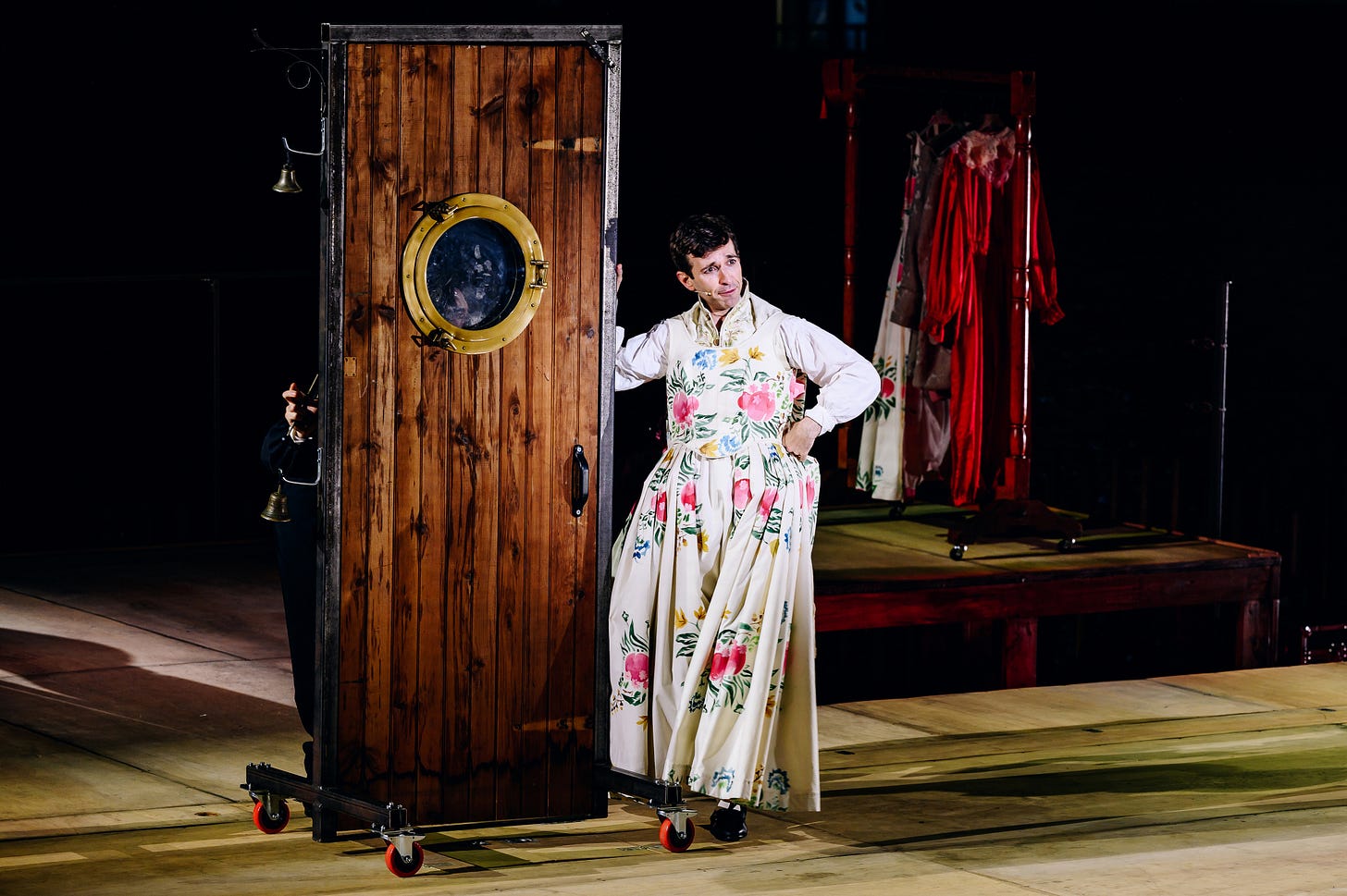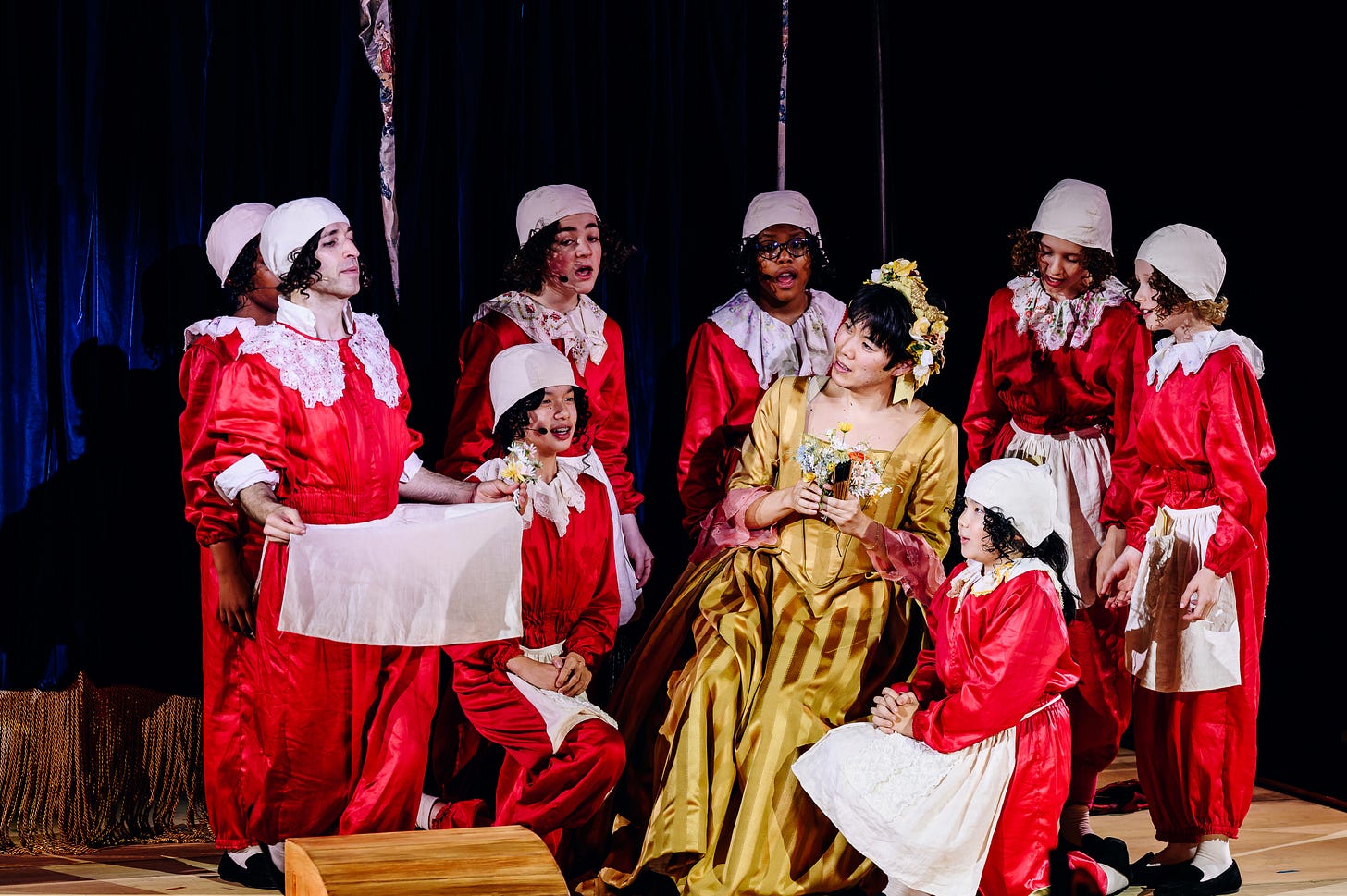Character ARC
I’ve struggled with this review of Anthony Roth Costanzo’s The Marriage of Figaro at Little Island. Maybe because I felt, accurately or not, that everyone expected me to weigh in strongly. I recently wrote for the Times about Cherubino’s aria Voi Che Sapete in relation to my changing voice. I even mentioned Costanzo! (I actually had no knowledge of the Figaro production at the time of writing.)
Reviews of Costanzo’s adaptation — of which there are many — range from glowingly positive to searingly negative, with very little in between. Nearly two weeks after seeing Costanzo’s one-man Figaro — a concept that, I’ll add, sounds almost AI-generated — my opinion is still buffering. (The sold-out show ends its three-week run on Sept. 22).
“Anthony Roth Costanzo,” the words flash on the screen. “Is,” another flash. “The Marriage of Figaro.” It all hinges on the verb. But, as Zachary Woolfe point out, it’s not really a one-man show. It’s marketed, instead, as “all in one voice.” (Even though he’s joined by a children’s chorus towards the end)
An actor troupe lip synchs as Costanzo switches, back and forth, between countertenor and baritone. Breathing life into Figaro, Susanna, the Count, Countess, Cherubino, Antonio, Barbarina. Bode’s exquisite costumes — a red Polichinelle onesie, a hand-painted floral gown — become characters in themselves. Pulled off and on.
Even Costanzo’s “haters” cannot deny that this requires extraordinary technique. And endurance, night after night. But sometimes, Costanzo’s lower register sounds better than his upper one. And is it more than a party trick? The operatic equivalent of throwing your voice? Would it matter?
I’m a bit of a Costanzo stan. Brilliant as the trans-coded Akhnaten, solid as sad-boy Orfeo, genre-bending in Only An Octave Apart, and virtuous as an artist-administrator. But I concede that there are sweeter-voiced countertenors. Costanzo’s sometimes has an astringency that’s not for everyone. Only occasionally in Figaro did he allow his voice to fully blossom. His “Voi che sapete” — as the puckish, horny Cherubino — left me wanting something more.
This condensed Figaro was cooked up by music director Dan Schlosberg (he, along with director Dustin Wills, hail from Heartbeat Opera) with a mostly one-on-a part pit. Julia Danitz’s exposed violin part was perhaps second in difficulty to Costanzo’s.
It’s campy, cringey, slapstick comedy (sometimes with literal slapping). The production presupposes knowledge of the libretto. But even I was lost at times. The subtitles seemed to parallel the audience’s feelings: “I’m getting anxious!” “What the f is going on?”
Costanzo sings the finale to Act II using a looper pedal. A multi-octave wedding layer cake. An ambulance siren seems to erupt from his open mouth, as he’s carried off on a gurney. As if collapsing from this superhuman endeavor. Dramatically, it should have ended there. But that would mean truncating Mozart. Instead, the second half lags. Heavily.
The best part, though: A doctor, wielding an endoscope, takes a real-time video of Costanzo’s vibrating vocal folds. Here, we see “The Queen’s Throat” up close, in all its pink glory. (For someone interested in speech-language-pathology, it was also very instructive.)
Is Costanzo’s Figaro a self-indulgent “ego trip,”as Chris Corwin writes for Parterre? I think it’s more self-aware. Even self-deprecating. He’s poking fun at diva worship. The fetishization of the voice. Throughout, Costanzo is dripping with sweat (you can see it in the photos). He’s practically killing himself for the audience in order to make a point. But what is that point?
Maybe something about the collapsing of gender (Mozart’s original being more about class, other than Cherubino’s trouser role) that happens when one voice sings all the parts. Costanzo has certain privileges, being a white, cis, gay man — deemed relatively unoffensive by most opera-going audiences, even when he’s wearing a dress— that allow him to make such a point.
I just hope that Costanzo’s tenure at Opera Philadelphia will see collaborations with more transfeminine singers, more transmasculine singers, more drag artists. Because, generally speaking, more voices are better.





Thanks for sharing your thoughts. I was intrigued by the project, but due to travel and other commitments missed the performances.